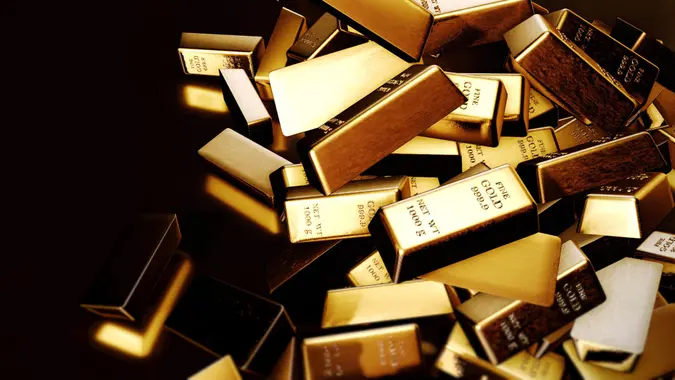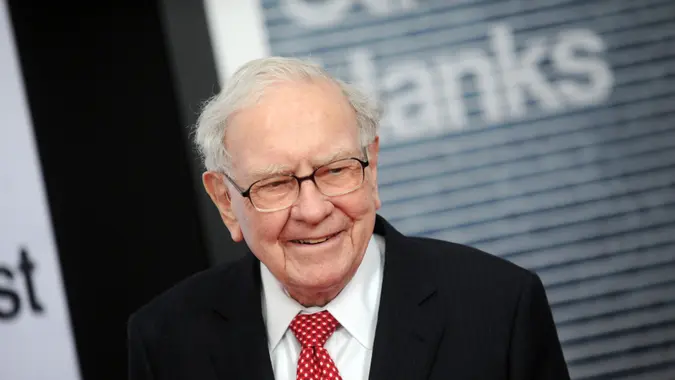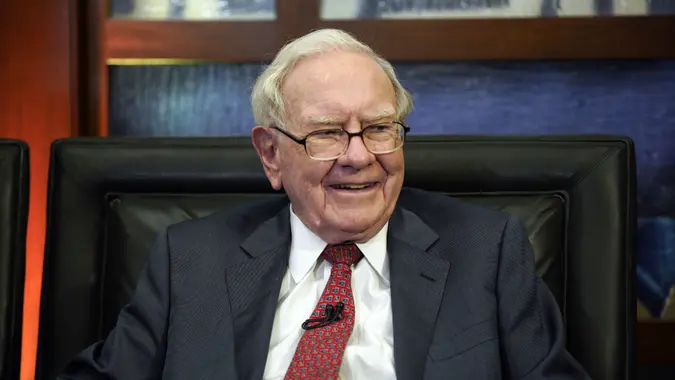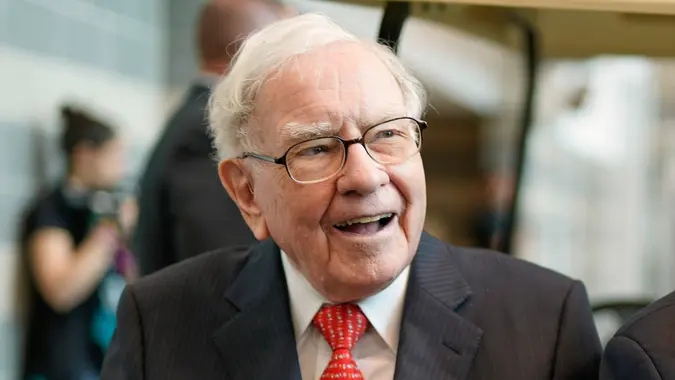If You Invested $1K in Gold 10 Years Ago, How Much Would You Have Today?

Commitment to Our Readers
GOBankingRates' editorial team is committed to bringing you unbiased reviews and information. We use data-driven methodologies to evaluate financial products and services - our reviews and ratings are not influenced by advertisers. You can read more about our editorial guidelines and our products and services review methodology.

20 Years
Helping You Live Richer

Reviewed
by Experts

Trusted by
Millions of Readers
When you think of buying gold, you may envision gold bars stacked in a safe just begging for a heist, or imagine the voice of an old-time prospector yelling about “gold in those hills.” Either way, if you are looking to buy or sell gold products, it can be quite a lucrative long-term investment.
Like most market-based investments, the price of gold gyrates in all directions, yet it has a safer reputation than stocks, bonds or digital currency. Tracking how it has performed over the last 10 years is a great way to see how it could perform for you in the long run.
So, if you invested $1,000 in gold a decade ago, how much would it be worth today?
Quick Take: 10 Years of Investing in Gold
Ten years ago, the price of gold had an average closing price of $1,159 per ounce. Today, it’s worth about $4,200 per ounce — a 262% increase in value. So, if you had invested $1,000 in gold a decade ago, it would be worth approximately $3,620 today. That’s a great return, but how does it compare to, say, an investment in stocks?
The S&P 500 rose 174% over the last ten years, for an average annual return of 17.4%. And that doesn’t even include its dividend yield over that time. Consider, too, that as volatile as the S&P 500 is, gold’s returns have varied even more in modern history.
Gold’s Uneven History
When Richard Nixon severed the dollar’s gold backing in 1971, the price of gold suddenly began floating at market rates. It consequently skyrocketed over the rest of the 1970s, delivering an average annual return of 40.2%.
Then the 80s arrived, and the gold party screeched to a halt. From 1980 through the end of 2023, gold notched an average annual return of just 4.4%. However, it’s been booming lately, and as of Oct. 19, 2025, gold futures are priced at about $4,345.
Gold doesn’t work like other investments. Traditional investments like stocks and real estate work because they generate revenue. Investors measure that revenue, assess the likelihood of future revenue growth, and put a value on the investment based on it.
Gold doesn’t produce revenue. In fact, it doesn’t “do” anything. It sits there and looks pretty. This may not mean much when the rest of the economy hums along healthily, but it can become plenty meaningful when a wrench gets thrown in the gears.
Why Investors Look to Gold Futures
Many investors consider varying amounts of gold to be the ultimate safe-haven investment. When “the world goes to hell in a handbasket,” investors can buy gold in the form of gold coins, gold ETFs and more.
Why? Precisely because it’s been used as a store of value for millennia. Investors like gold as a hedge against geopolitical uncertainty. If global markets and supply chains look like they might get disrupted, investors flock to gold. In 2020, for example, gold jumped 24.43%.
Likewise, investors retreat to gold when fiat currencies lose value quickly due to inflation. Amidst all the inflation anxiety in 2023, gold rose 13.08%. At the beginning of 2025, the price of gold was expected to increase by around 10%, potentially pushing it to the $3,000 per ounce mark. As of October 2025, it has far surpassed that.
Final Take To GO: Is Gold a Good Investment?
The bottom line is that gold offers a non-correlated hedge against the stock market. In other words, gold offers diversification — a collapse in financial markets doesn’t cause a collapse in gold prices. In fact, many investors believe gold will rise in price if a bear market hits.
Hedging against inflation with alternative assets like gold can be a prudent option and is often regarded by many investors as a safe haven, particularly during periods of political turmoil and market uncertainty. Not only does it diversify your portfolio, but it behaves differently than classic stocks and bonds, mitigating risk as not all of your nest eggs are in one basket.
So, is gold a buy? Though there are no guarantees, it has proven historically to be a defensive investment. Don’t expect it to generate the same returns as stocks or real estate or pay any cash flow. However, when the zombie apocalypse comes, gold will have value, even if no other investments do.
G. Brian Davis contributed to the reporting for this article.
More From GOBankingRates
- Nearly 1 in 3 Americans Hit by a Costly Holiday Scam, Norton Survey Shows -- How To Avoid This
- Here's What the Average Social Security Payment Will Be in Winter 2025
- How Middle-Class Earners Are Quietly Becoming Millionaires -- and How You Can, Too
- The Easiest Way to Score $250 for Things You Already Do
 Written by
Written by  Edited by
Edited by 

























